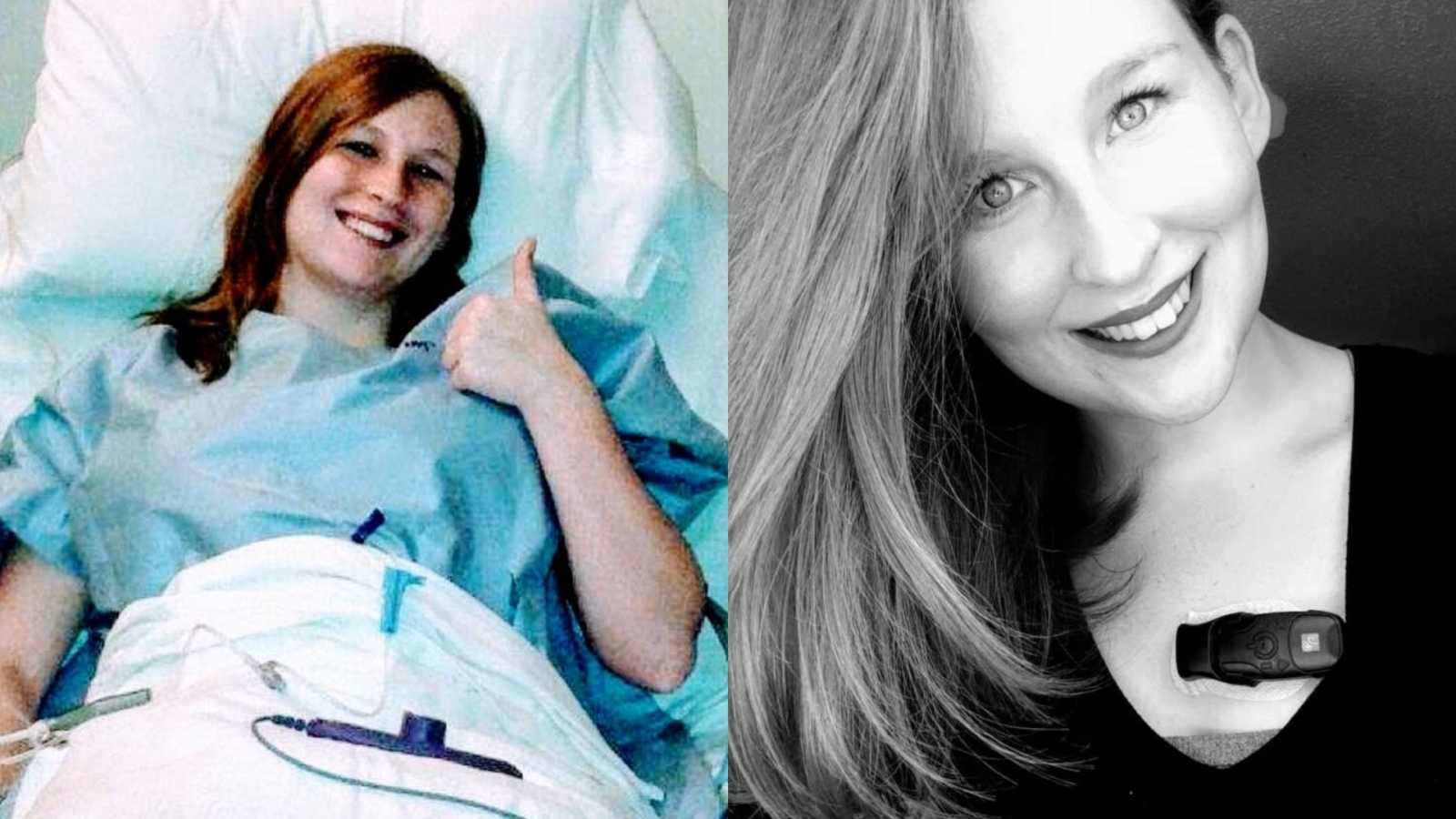“As a child, I was always praised for my extreme flexibility. I never understood this, as I always thought everyone else was as flexible as I was because it was my normal. It would take 25 years for me to find out not only was I different, but I was chronically ill. You see, I have a rare genetic condition called Ehlers-Danlos Syndrome. This disorder affects the body at a cellular level. My collagen is mutated from that of a normal person, which causes body-wide problems. Collagen is one of the main building blocks for all the soft tissue in the body, so having it be defective can be disastrous.
Ehlers-Danlos Syndrome, or EDS for short, causes me to dislocate almost every single joint in my body during mundane tasks, like bathing, sleeping, and even sitting still. Each day is a rollercoaster because I never know if I am going to be able to walk and act like the typical 25-year-old, or if I’m going to need to wear my many braces while utilizing my manual wheelchair because my body can’t support me that day. It’s like playing Russian Roulette every time I move. Life wasn’t always like this. Growing up, I was extremely active and loved playing outside with my family. Yes, I would often get hurt, but by the time I saw a doctor, I was okay. I remember one day when I was practicing an ollie on my skateboard, I fell, and I could have sworn I severely injured my elbow. My father took me to the ER because I was crying hysterically due to the amount of pain I was experiencing.

After X-rays, the ER doctor came in and asked me how many broken bones I thought I had. He had me guessing until I got to three broken bones, then he laughed and said I was completely fine. This was the beginning of me doubting my own body while thinking my pain was all in my head. Fast forward a few years. I was a senior in high school. I had been a pole vaulter in track and field for some time. We headed outside for our first outdoor practice of the season. As the team was working on a gliding drill, my pole slipped out from underneath me which caused me to fall six feet to the ground. In this motion, my left leg flew to the side. I was fine at first, but a few minutes later I couldn’t stand without being in agonizing pain. This would be the end of my track and field career.
After months of being in pain and having difficulty maneuvering my college campus as a freshman, I was referred to an orthopedic specialist who ultimately diagnosed and surgically fixed the torn labrum in my hip on December 1st, 2014. After 6 weeks, I was back to the same amount of pain I was in before surgery, so I started to participate in intense physical therapy multiple times a week for the next 18 months until I was referred to a different orthopedic specialist with more experience. This new surgeon took one look at my X-ray and showed me my femoral head was a cube instead of a sphere, which was causing a recurrent labral tear. So, this led to my second left hip surgery in July of 2016.
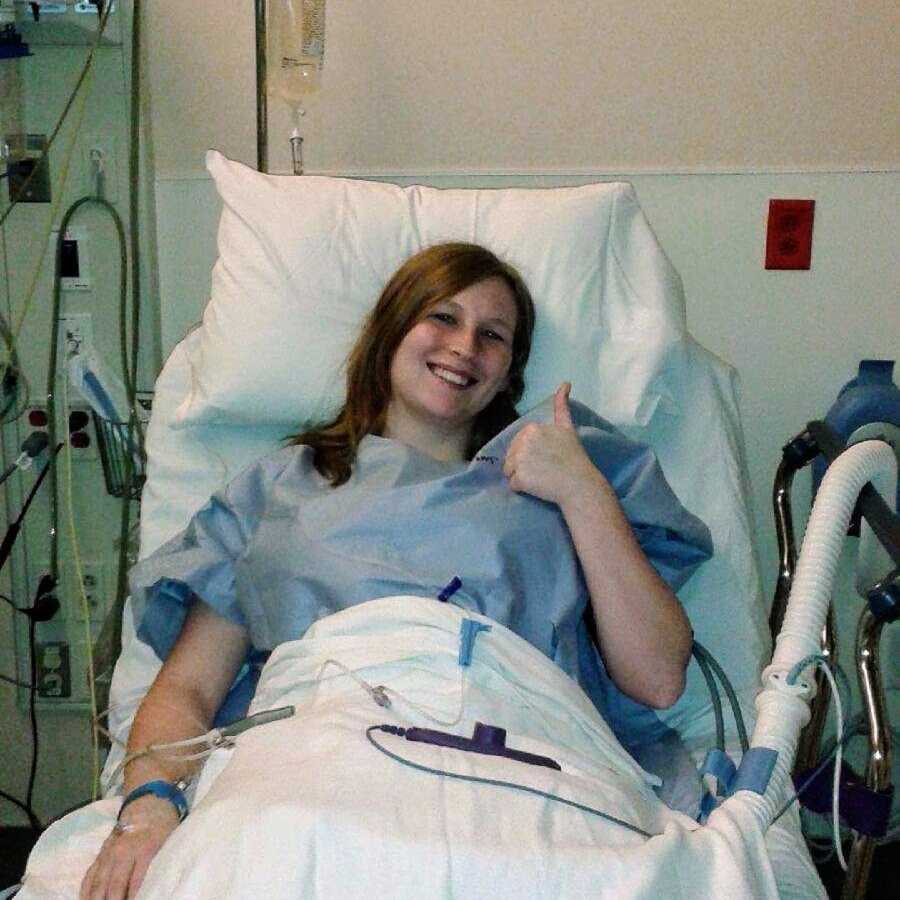
I was doing well after this surgery, but the pain was still there. This didn’t make any sense to me or my surgeon, so I had to keep participating in physical therapy with the hope more time and strength gained would lessen the pain. We were sorely wrong. In December of 2017, just a couple of weeks after marrying the most incredible man, I had my first appointment at Mayo Clinic in Rochester, Minnesota. I had a CT scan that showed my left leg was 35 degrees retroverted (not in alignment with my hip socket), which needed surgery to correct it. On February 5, 2018, I had an anteverting femoral neck osteotomy, which basically cut my femur in half and rotated it to be in better alignment with the hip socket.
This recovery was brutal, but it was worth it. After 6 weeks of non-weight bearing, I was learning how to walk again with my new anatomy. I was feeling confident and released to work again, so I started back in the mental health field, for which I was in the process of obtaining my master’s degree. I was even able to get hired for my dream job. Sadly, my dream was cut short. On June 7, 2018, I was attacked by a patient which caused me to rupture my hip capsule. For the next 9 months, my left hip was almost always partially dislocated. By the time I was finally approved by work comp to have surgery to repair my hip capsule, the damage was done. On March 28, 2019, I had a hip capsule reconstruction that put me in a hip-to-ankle brace and non-weight bearing for the next 6 weeks. Those 6 weeks in the brace were the worst 6 weeks of my life.
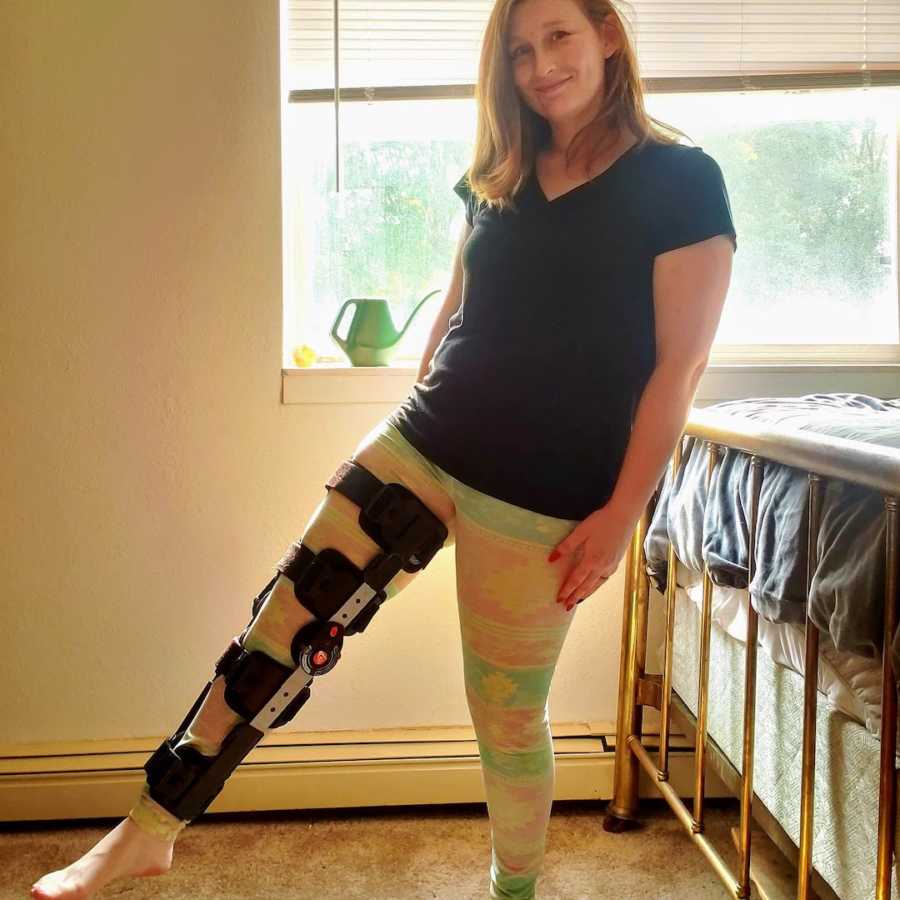
Because my femoral head had a crater-like divot in it from my hip being partially dislocated for so long, the capsule reconstruction didn’t make a difference. On August 28, 2019, I had my first total left hip replacement at only 24 years old. At the time, we thought the replacement would solve all my problems. Soon enough, I started to partially dislocate my left hip multiple times a day. My other joints started to become more painful, which didn’t make sense because I was otherwise healthy. I felt hopeless and believed I was always going to live in pain because ‘nothing else could be done.’ This is where life gets interesting. In January of 2020, I started to vomit literally anytime I tried to eat solid food. For three months, I survived off Ensure for nutrition because I couldn’t keep anything else down.
I lost over 50 pounds because I was essentially starving. I was referred to specialist after specialist who couldn’t make heads or tails of why this was happening until I finally saw a functional GI specialist who diagnosed me with Rapid Gastric Emptying Disorder. This meant my stomach was constantly constricted and wasn’t moving food as a normal stomach would. After some trial and error, we found some medications that helped me eat a little bit more. I was then able to convince my hip surgeon something still wasn’t quite right with my replacement. On June 11, 2020, I had a left hip revision replacement. I remember the surgeon telling my husband how surprised he was I never fully dislocated my left hip because he was able to pop it out with a simple tap of his finger. The new replacement was specially made for me to fit more snugly in the socket, which it does. My left hip is now my most stable joint.
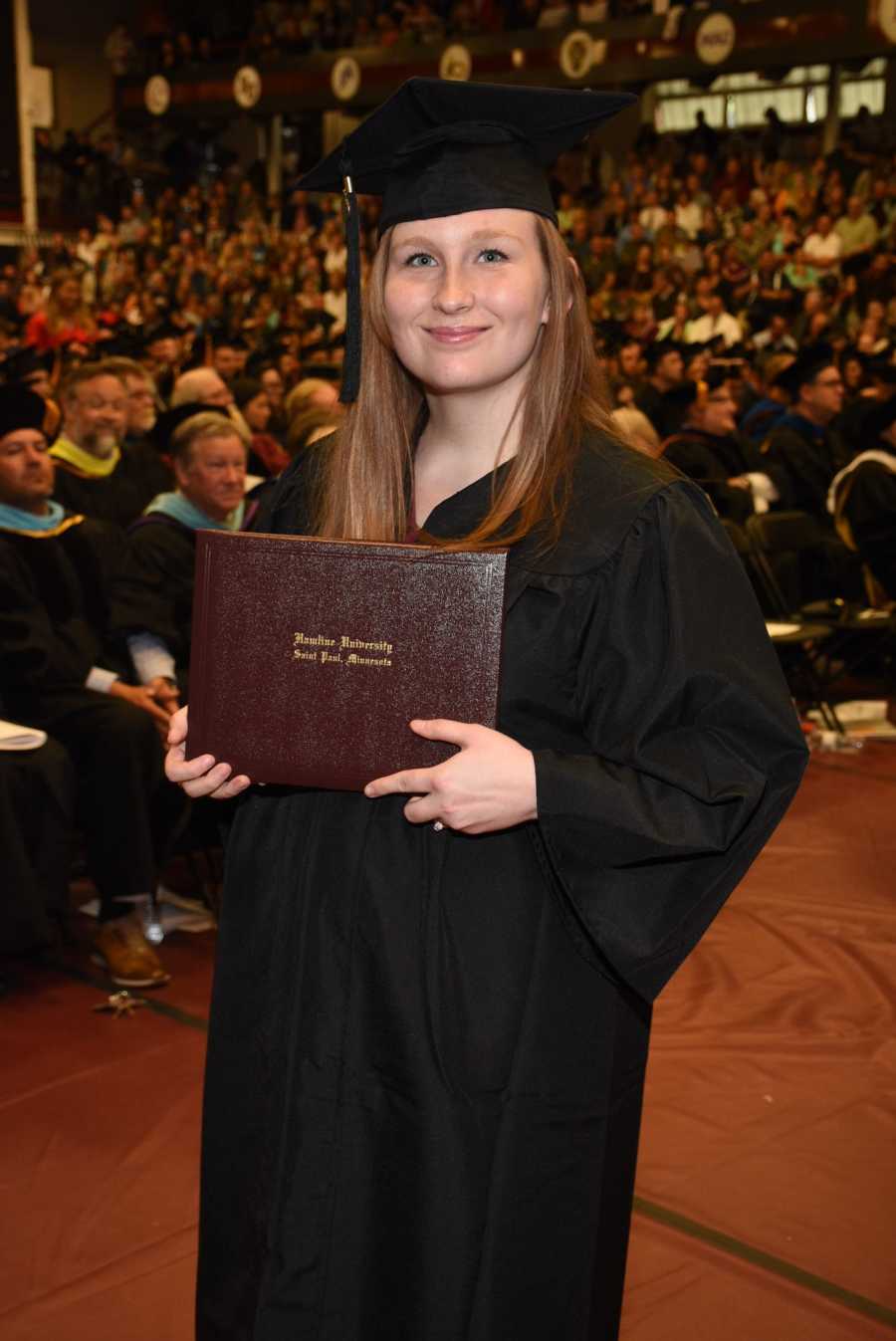
I was discharged the same day due to the pandemic but asked to stay at a hotel nearby in case I had any complications. Less than 12 hours after my revision, I was walking around the hotel room without crutches and without pain. I was bawling over how big this was for me. I finally felt hope I could lead a semi-normal life. Throughout all of this, I was working with a physical therapist who changed my life. After my first replacement, she mentioned how flexible I was and how I would hyperextend my knees. She suggested I see my primary over this because she thought I may have a hypermobility disorder. My primary agreed and referred me to a geneticist who would hopefully figure out what was wrong with me. If it were not for this physical therapist, I can honestly say I don’t think I would be alive now. All my mystery illnesses and injuries with no cause put me in a dark place mentally.
If I would not have gotten any explanation for my health, I truly believe I would have kept spiraling until I could no longer take it anymore. Thank you to Kinesis Physical Therapy for making a positive difference in my life. A short 8 months after my PT suggested I be seen, I was finally able to be seen by the geneticist on July 23, 2020. He formally diagnosed me with Ehlers-Danlos Syndrome, hypermobility type (hEDS). He told me because I was sedentary due to my repeated hip surgeries, I lost muscle tone, which was the only thing holding my body together, so it made sense why I started to experience more issues over the last year. He explained my ligaments were like crusty old rubber bands, so my muscles were doing the jobs my ligaments were no longer capable of. He told me hEDS is progressive, incurable, and can only be managed by preventing injuries in the first place. Once something dislocates, it is going to keep dislocating unless I’m living in my braces 24/7 or try surgery to ‘tighten’ the joint.
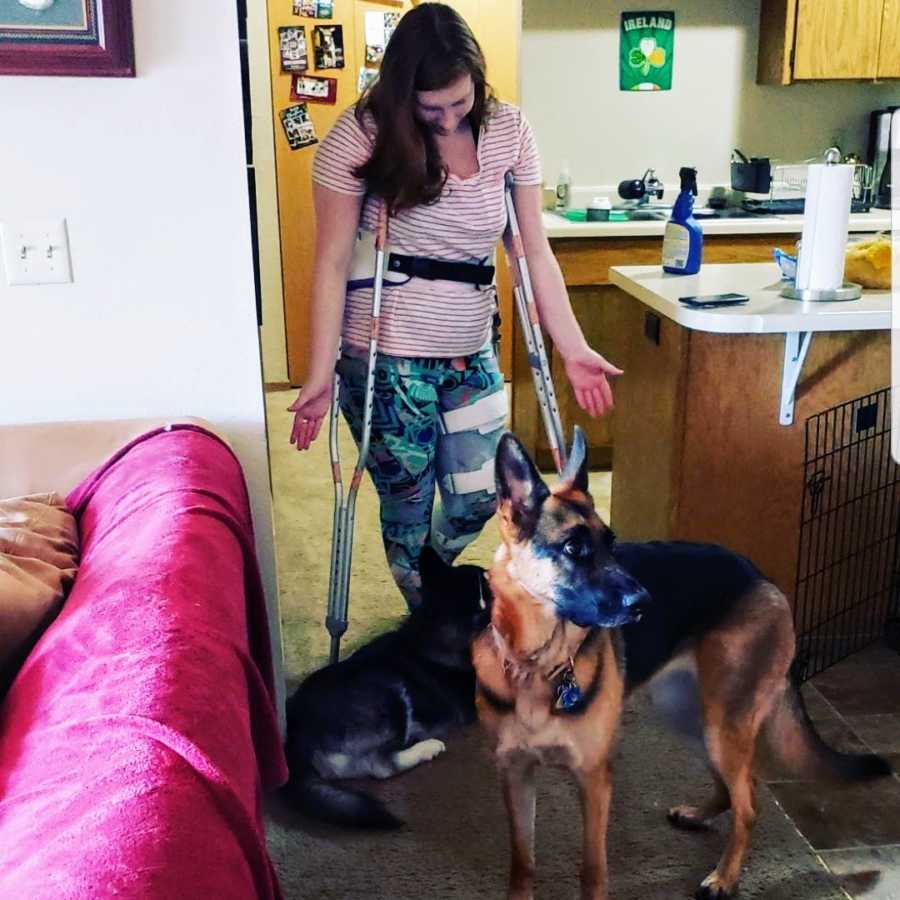
Only a few days after this appointment, I fainted for the first time. I had always grown dizzy after showering in warm water or standing up too quickly, but this was my normal, so I thought it was simply this—normal. After an ER visit due to the fainting episode, I was referred to a cardiologist who then referred me to an electrophysiologist who diagnosed me with vasovagal syncope. During my repeated fainting episodes, I started to dislocate my joints more and more in situations that really shouldn’t cause a joint to dislocate. I repeatedly dislocated my right kneecap and even injured my shoulder when braking in the car to avoid a collision. My kneecap continued to cause issues until I had the ligament holding the patella in place reconstructed on December 22, 2020. While recovering from this surgery, I tore the labrum in my right hip while accommodating my immobilizing knee brace. When I was able to start weight-bearing again, I broke BOTH ankles by standing on them.
The talus in each ankle fractured and developed avascular necrosis. I am currently waiting on a core decompression for my right ankle scheduled for July 15, 2021, which I can only move forward with if I am able to raise $2895 for a portable electric wheelchair my insurance company deemed ‘convenient’ even though I am unable to be non-weight bearing without it due to my shoulder instability and hand weakness. 3 to 6 months after, at only 26 years old, I will have my right talus replaced. We are expecting my left ankle to undergo the same surgeries at some point but are hoping we can push it off until my right ankle is stabilized. My right talus avascular necrosis progressed extremely quickly, so we really don’t know how much time I have before my left ankle fails me. Earlier this year, I had the opportunity to meet with an EDS specialist who answered all the questions I had about this disorder, explained many of the symptoms I had, and diagnosed me with many of the common comorbid disorders that go along with EDS.
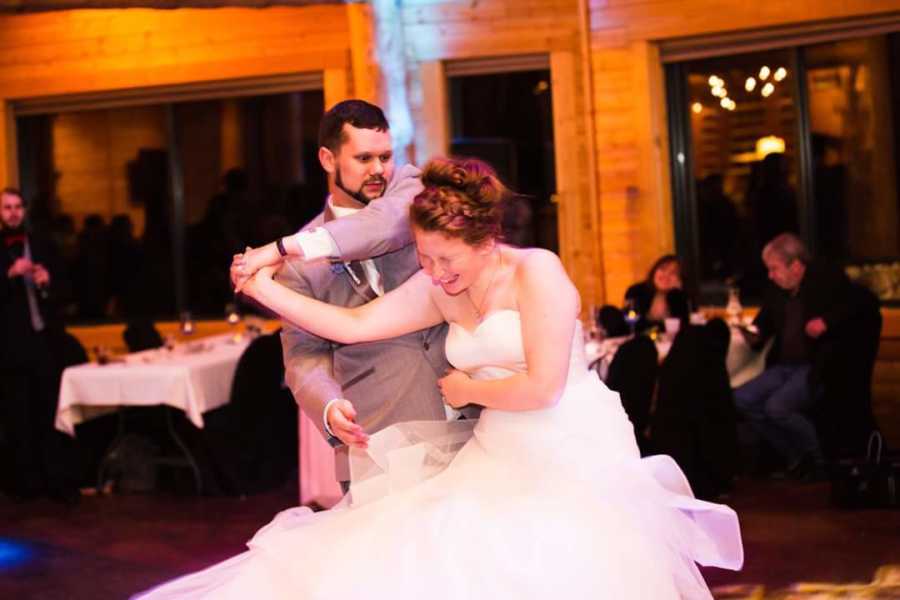
She was able to connect me with other medical professionals who know how to work with patients who have Ehlers-Danlos. As of right now, my diagnosis list is vast. It includes Ehlers-Danlos Syndrome, Mast Cell Activation Syndrome (I can have an allergic reaction to literally anything at any time for no reason), dysautonomia (this explains feeling woozy after showering and my body turning into a limp noodle by standing), bilateral talar avascular necrosis, severe asthma, degenerative disc disease in every vertebra of my cervical spine, spondylolisthesis, temperature intolerance, stress fractures in my lumbar spine, arthritis in almost every joint in my body, ankle instability, dermatographia, TMJ disorder, ulcers, rapid gastric emptying disorder, functional dyspepsia, myoclonic seizures, high blood pressure, vasovagal syncope, heart palpitations, migraines, PTSD, anxiety, and major depressive disorder. I’m sure I forgot a few, but as you can see, this list is vast and includes my whole body.
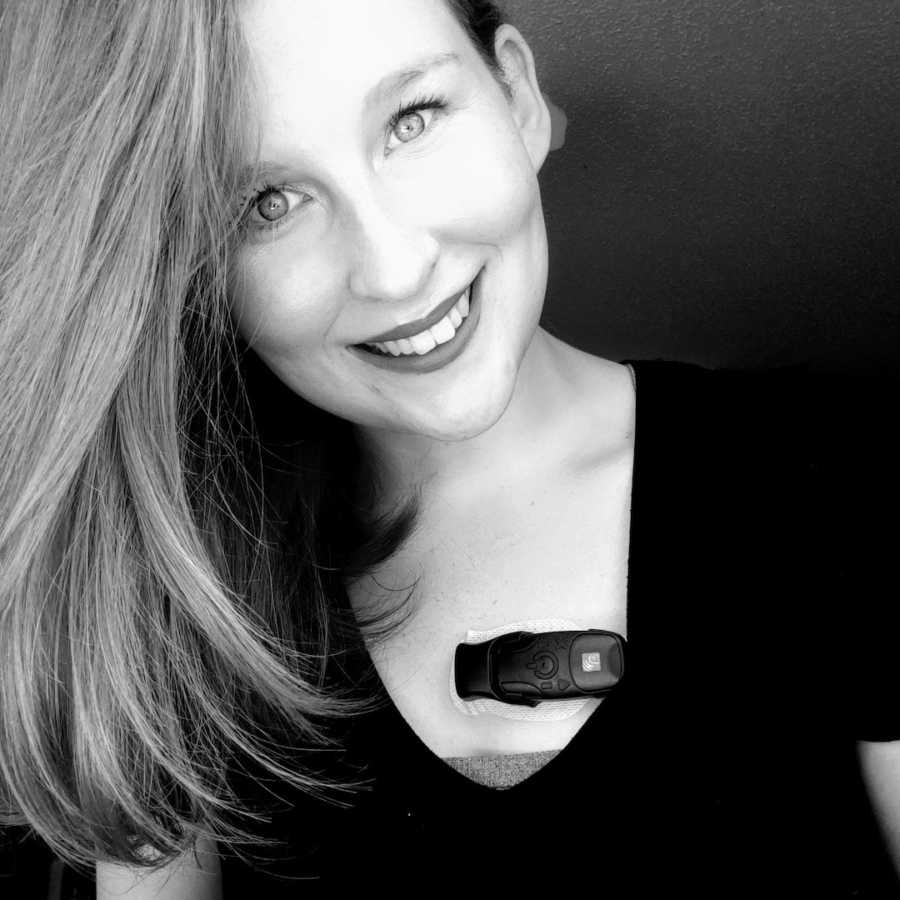
I often get asked how I can have such a positive outlook and still smile with all the pain and hardship I endure. Don’t get me wrong, some days are absolute hell and I do nothing but feel pity for myself, but I try to make those days far and few because those emotions take more of a physical toll on my body. I am surrounded by the best support group I could ever hope for who make those bad days a little bit better.
It took me a while to get to where I am, but I am genuinely thankful for the journey I have been on caused by my Ehlers-Danlos because it has taught me more about who I am and has introduced me to many people I would have never met if I were not sick. This journey has shown me the strength I never knew I had. It has helped me learn to live in the moment and be thankful for the little things. I choose to embrace the silver linings instead of drowning in the rain.”

This story was submitted to Love What Matters by Erin Diffley Kjer of St. Cloud, Minnesota. You can follow her journey on Instagram and Facebook. Be sure to subscribe to our free email newsletter for our best stories.
Read more stories like this:
Provide beauty and strength for others. SHARE this story on Facebook with friends and family.

